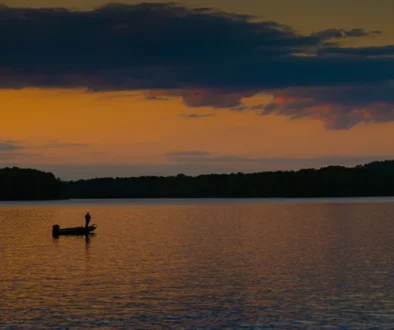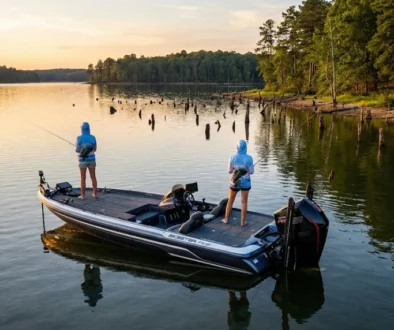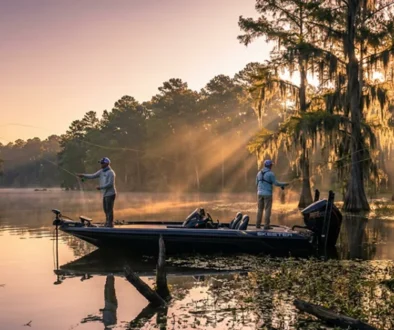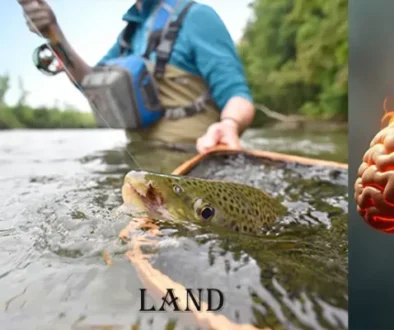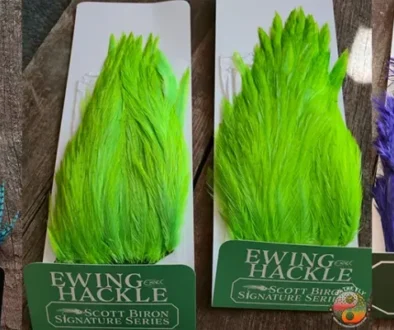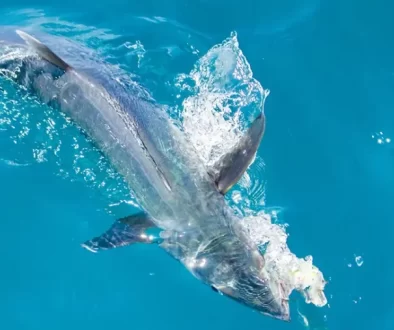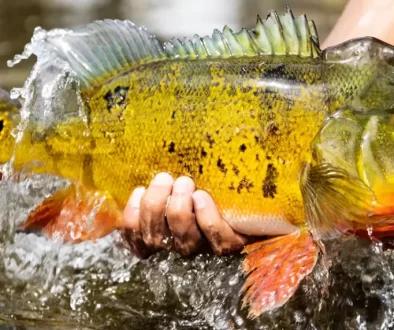Beginner’s Journey: How to Start Fly Fishing for Steelhead
Ever stood on the river’s edge, rod in hand, and felt that shiver of anticipation? That’s where our journey begins as we dive into how to start fly fishing for steelhead.
A dance with these elusive creatures isn’t just a sport; it’s an art. An interplay between man and nature where knowledge, skill, and patience fuse together. We’re talking about cunning adversaries here – The Beauty of Rainbow Trout turned oceanic adventurers before returning home.
In this tale of pursuit, you’ll unravel their secrets. Discover how gear choice can tip the scales in your favor or see why mastering specific techniques might turn those near misses into triumphant catches. We’ll also touch on steelhead fly tying in how to start fly fishing for steelhead.
Here’s my promise to you: By the time our journey downstream wraps up, you won’t just be ready to target Steelheads in diverse settings. You’ll also have the know-how to handle them like a seasoned pro when they’re game for some action.
Table Of Contents:
- Understanding Atlantic Salmon and Their Habitat
- Essential Gear for Fly Fishing for Atlantic Salmon
- Fishing Techniques and Strategies for Atlantic Salmon
- Fly Selection for Atlantic Salmon
- Tuning Your Skills and Gear for Atlantic Salmon Fly Fishing
- Safety Measures and Etiquette in Fly Fishing
- FAQs in Relation to How to Start Fly Fishing for Atlantic Salmon
- Conclusion of How to Start Fly Fishing for Atlantic Salmon
Understanding Steelhead and Their Behavior
The steelhead, scientifically known as Oncorhynchus mykiss, is a migratory fish species that’s got anglers all over the world hooked. These hard-fighting fish are actually rainbow trout that have chosen an adventurous life in big water like oceans or Great Lakes before returning to their home rivers to spawn.
They’re quite the travelers, making a grand journey from freshwater habitats out into saltwater expanses only to return back again. If you thought your summer road trip was epic, these guys make such trips annually.
Wild Steelheaders United notes that their spawning migration occurs from early November through mid-April depending on regional weather conditions. They sure don’t let winter conditions deter them. The timing of this trek makes for two distinct runs – Summer Steelhead and Winter Steelhead – each offering unique fly fishing opportunities.
Get your Copy of Spey Flies by John Shewey Click Here.
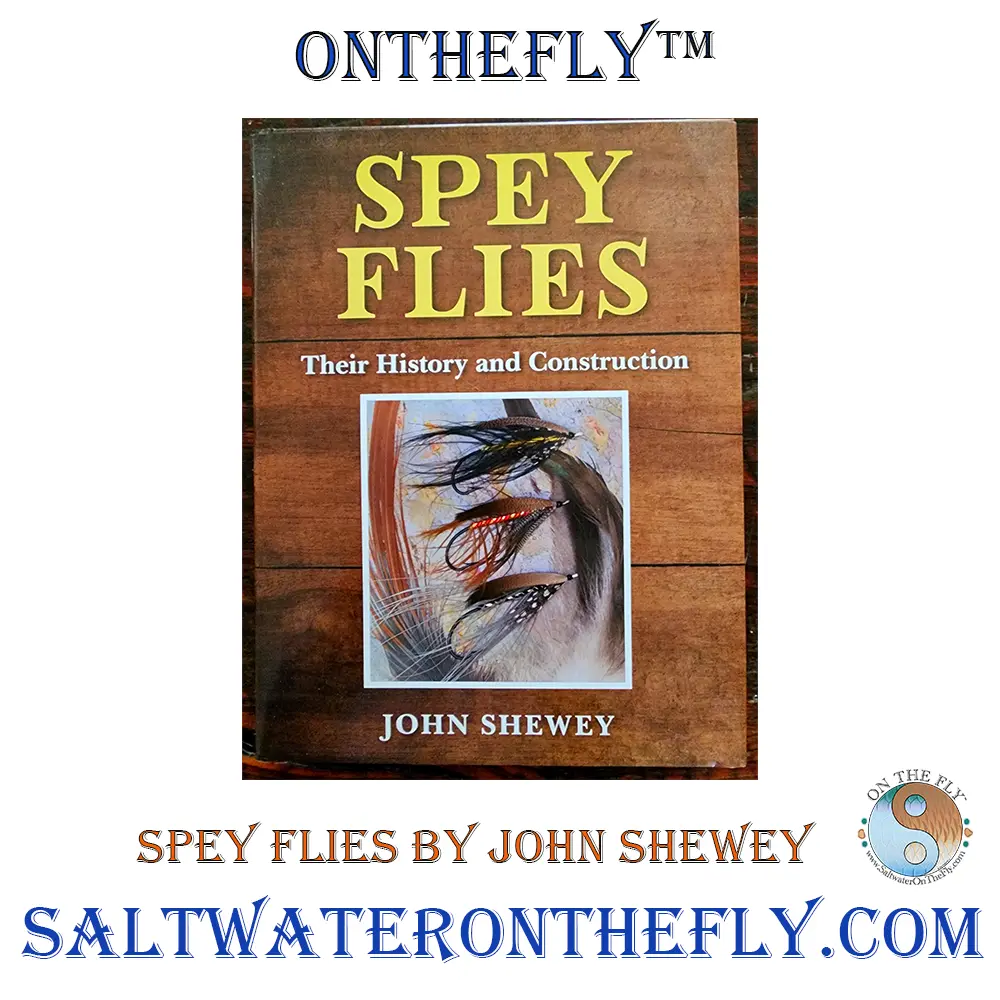
An Introduction to Steelhead Fly Fishing: Understanding River Systems
In order to understand steelheads better, we need first comprehend river systems they inhabit. Think of it like learning about someone’s hometown before you visit; it gives context and helps us appreciate things more fully.
River systems vary greatly with clear water bodies being vastly different than cloudy ones. Add temperature variations between seasons into mix – warmer during summer months and cooler in winter – one can see why understanding behavior patterns of these aquatic creatures requires some work.
The Behavior & Characteristics of Steelheads: What Makes Them Unique?
Fishermen often regard steelheads as intelligent yet elusive targets because they seem so unpredictable at times but once you start recognizing certain patterns, predicting where they might be becomes easier. A big part of this is understanding their feeding and spawning habits.
Steelheads are carnivorous, dining on a menu consisting primarily of other fish (the Wooly Bugger and Egg Sucking Leech patterns imitate these) as well as various invertebrates like aquatic insects or crustaceans (hence the Pheasant Tail Nymph).
When it comes to spawning, their behavior undergoes significant changes.
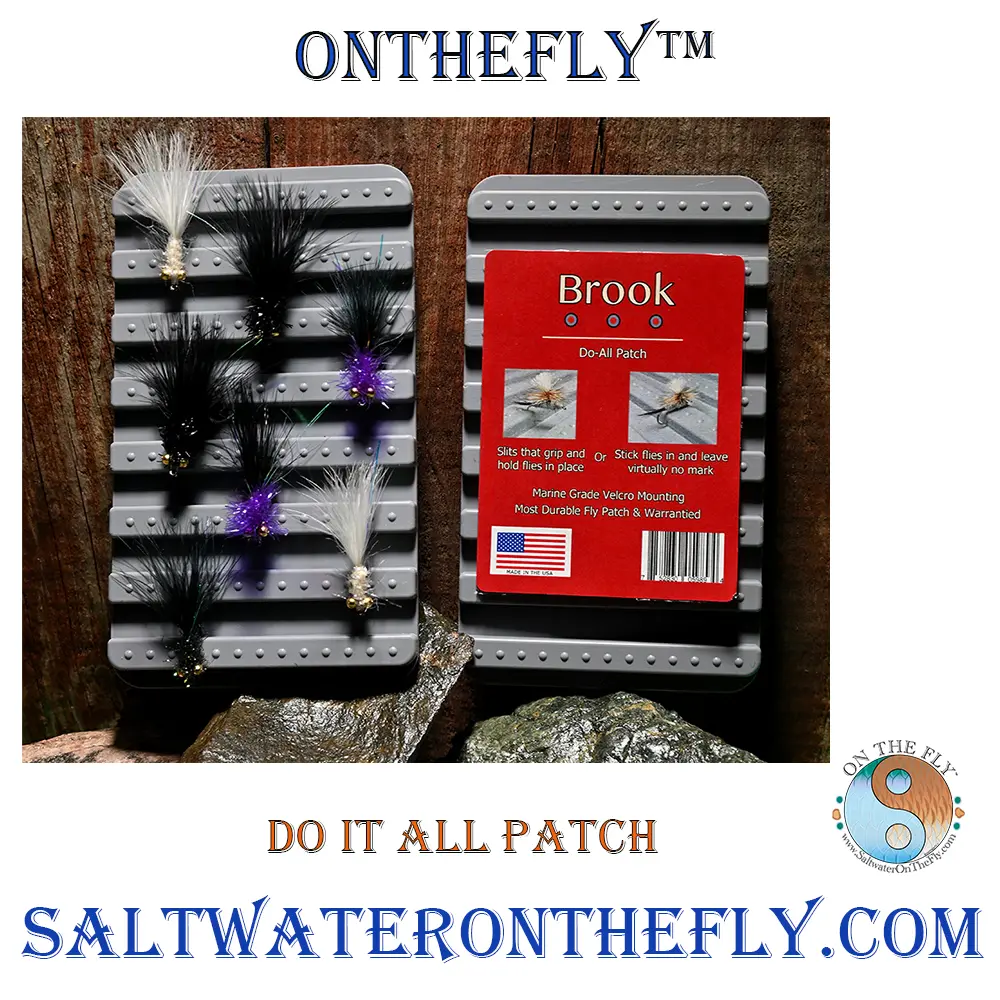
Techniques and Tactics in Fly Fishing for Steelhead
Fly fishing for steelhead is an art, demanding a blend of knowledge, skill, patience, and the right tactics. But let’s not forget about the thrill that comes with it.
Summer vs Winter Steelheading
The beauty of steelhead fly fishing lies in its diversity. Summer run steelheads enter freshwater sexually immature while winter run steelheads come into the river fully matured. This difference changes up your game significantly because summer fish tend to be more aggressive towards flies than their winter counterparts. They will leap at swung flies without hesitation – quite literally adding some sizzle to your summer months. In contrast, during the colder season when targeting winter-run fish you might have to rely on nymphing techniques or indicator fishing strategies.
Nymphing Techniques for Steelhead
Nymphing involves presenting a baited hook below the surface tension where these big fellas often hold tight, especially during cold conditions. This technique works well as it allows you to get down deep into those hard-to-reach places using weighted patterns like Copper John or Pheasant Tail nymphs.
You may also want to consider using strike indicators – essentially bobbers that help monitor any potential bites from stealthy steelies. Nuke egg patterns can be particularly effective here due to their vibrant colors catching attention even in murky water.
Swinging Flies for Steelhead
If swinging flies is more your style (and boy does this method pack a punch.), then spey rods are going to be your best friends. The key with this tactic is choosing the right fly – egg sucking leech patterns or Wooly Bugger are solid choices for their tantalizing movement in water.
Then it’s all about mastering that Spey cast. It’s a beautiful dance really, with your line soaring through the air before gently landing on the surface and beginning its hypnotic swing across the current – irresistible to any self-respecting steelhead.
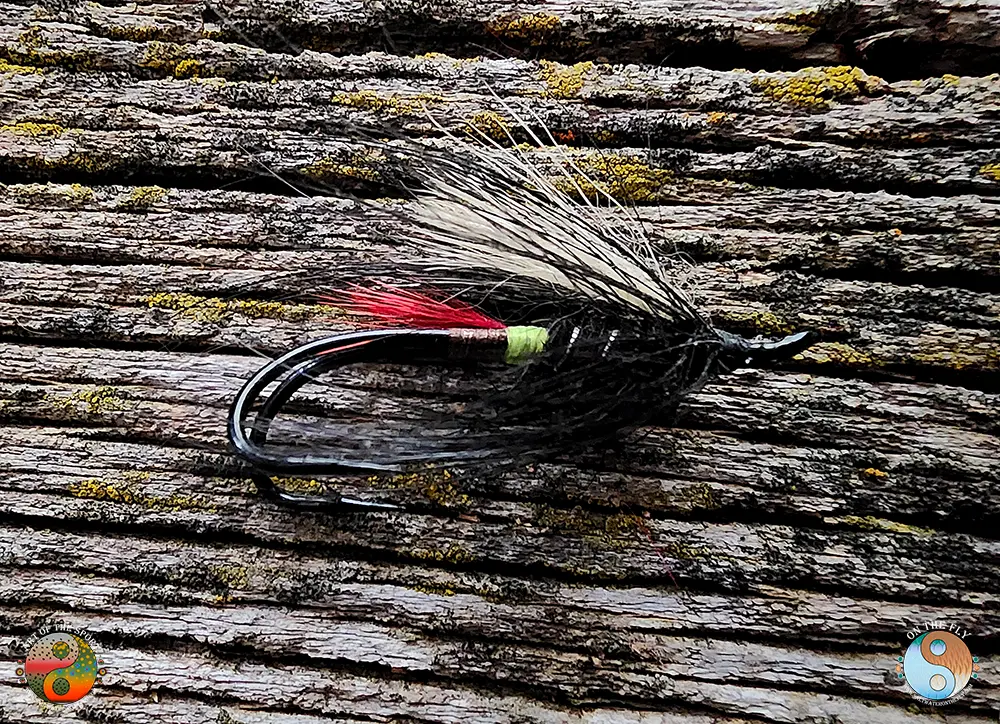
Spey Fly Reels Ideal for Swinging Flies
American made Spey Reels are created from one piece bar stock aluminum.
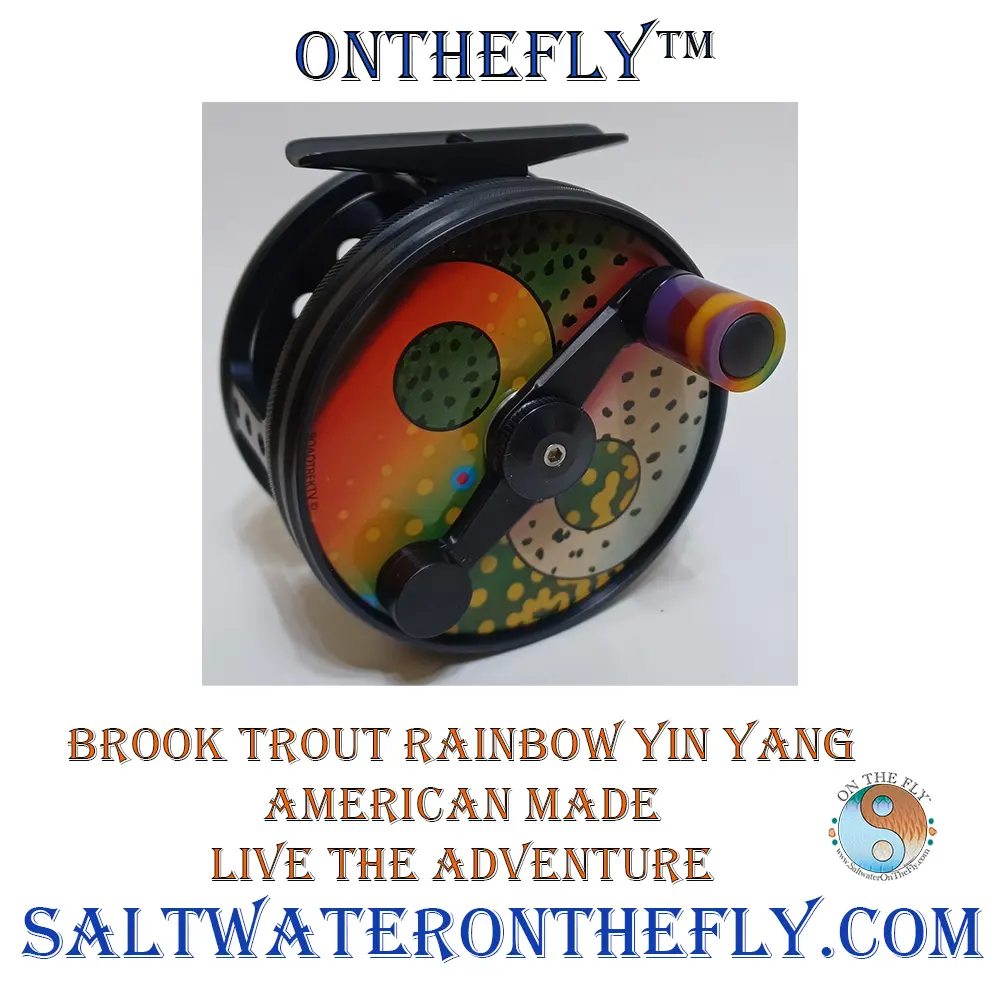
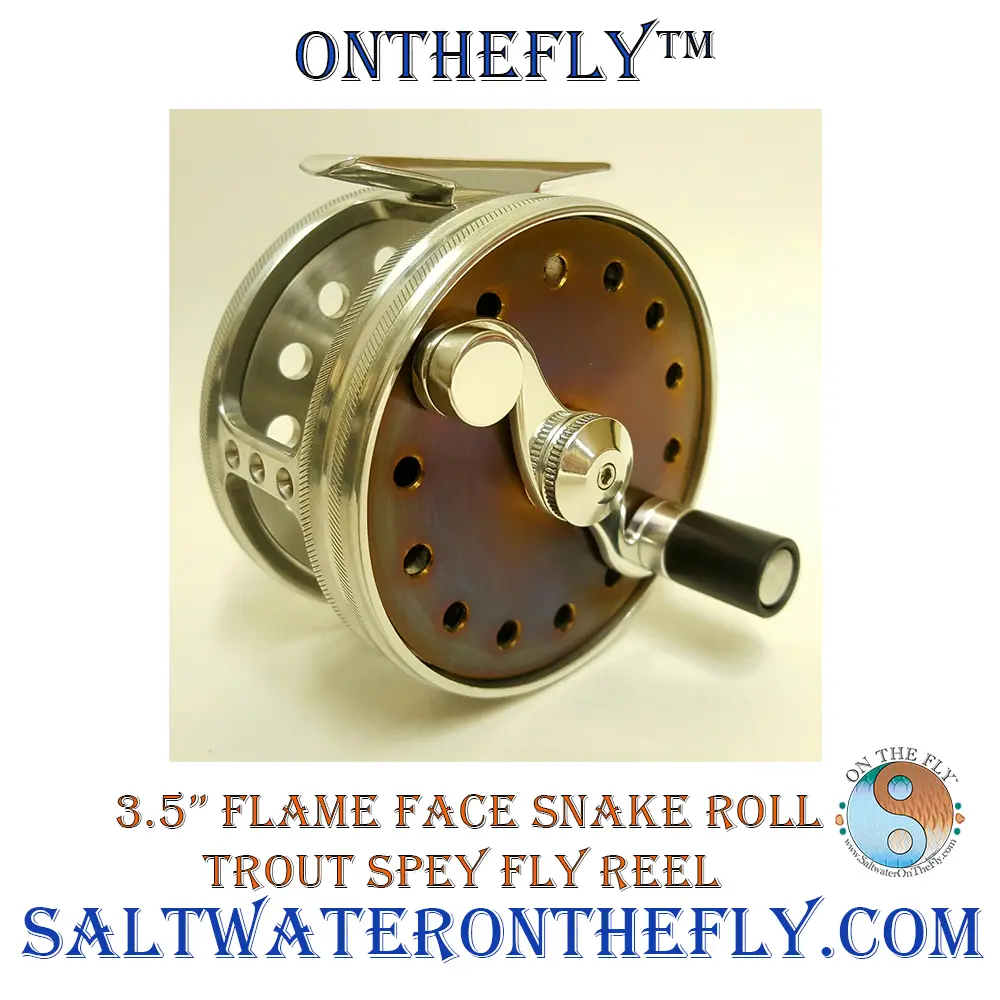
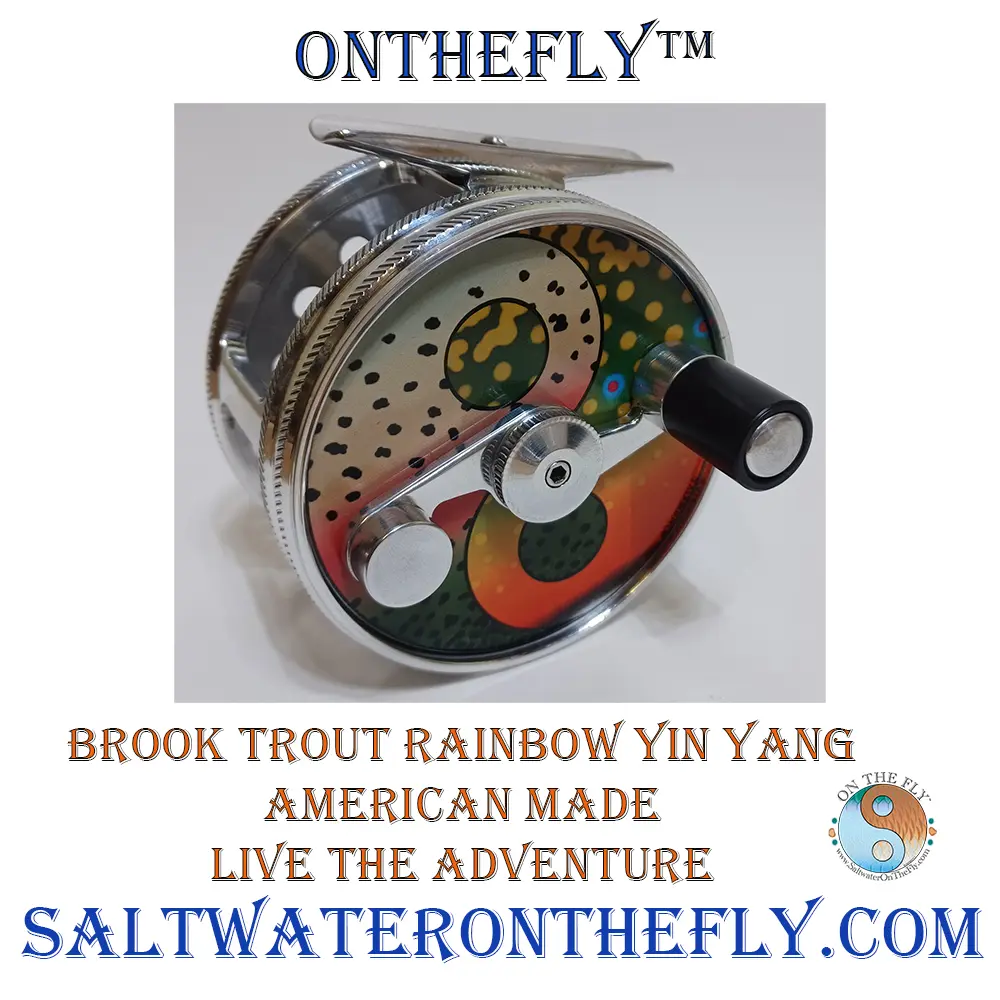
Choosing the Right Flies for Steelhead Fly Fishing
Fly selection is a critical part of steelhead fly fishing. It’s like deciding on the ideal tune to spin on a jukebox – you want something that’ll get your listeners (in this instance, the fish) hyped. To make sure we’re singing in tune with our underwater friends, let’s discuss how to choose flies effectively.
The Best Steelhead Flies for Different Conditions
Picking out the best steelhead flies depends largely on water conditions and time of year. The two key players here are egg patterns and streamers.
Egg patterns are often top choice during spawning season or when rain washes salmon eggs into rivers from nearby tributaries. Ever seen those viral videos where animals go crazy over unexpected food falling from above? Well, it’s kind of like that but in an aquatic setting.
On the other hand, streamers imitate baitfish or small trout species which larger fish feed on regularly. If you’ve ever watched nature documentaries featuring predators chasing their prey, you’ll understand why these can be so effective. Streamer patterns come in all shapes and sizes – wooly bugger or pheasant tail anyone? Fly Selection Click Here.
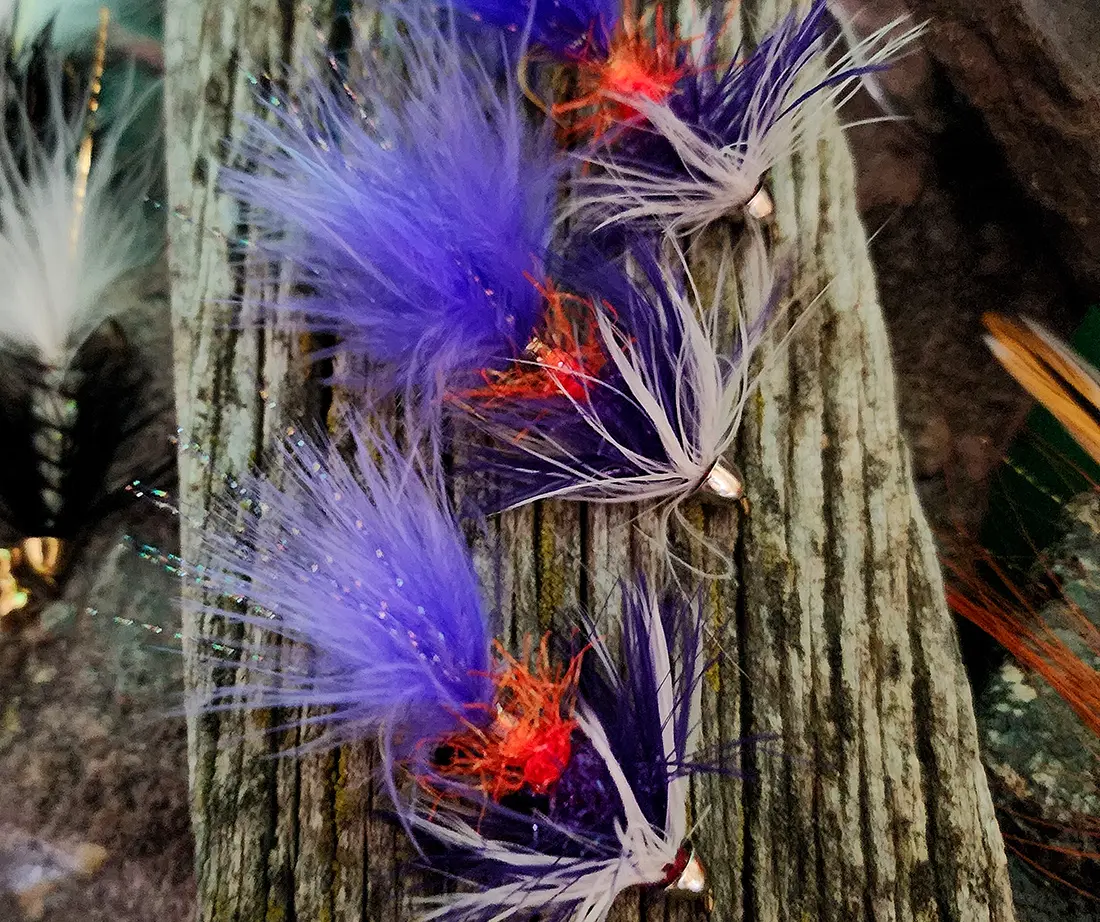

Egg Patterns for Steelhead Fly Fishing
Say hello to egg-sucking leeches – nope not horror movie monsters – but some truly attractive lures when it comes to steelheads. Egg sucking leeches along with nuke eggs take center stage as they mimic natural sources of protein-rich nourishment floating downstream.
A helpful tip: try tying them using vibrant colors such as hot pink or chartreuse. It’s like throwing a neon sign into the water column saying, “Hey fish, dinner is served.”
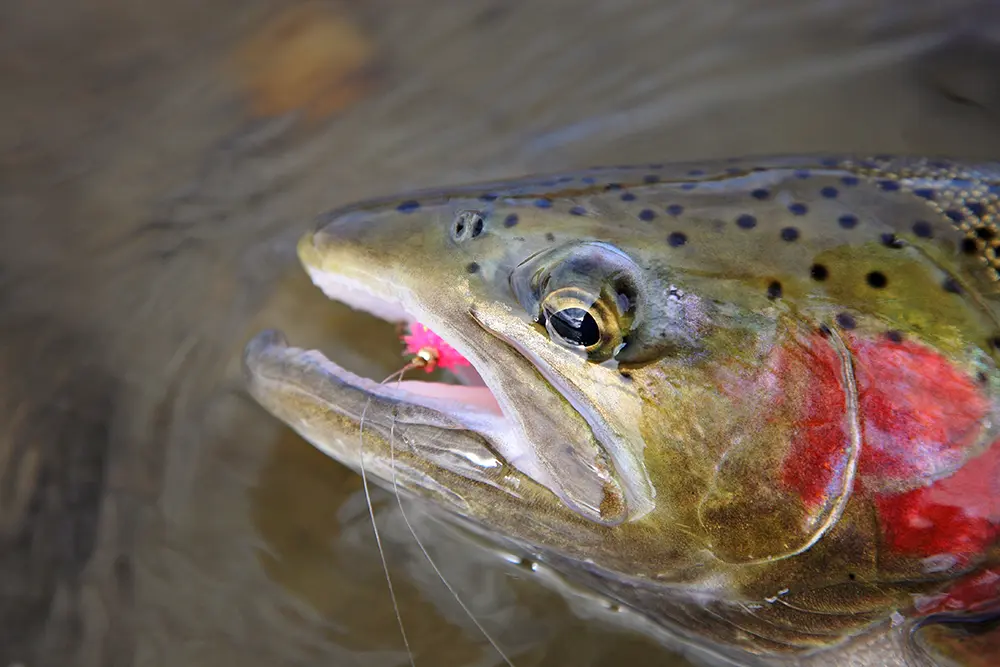
Effective Streamer Patterns for Steelhead
Now onto streamers – they’re not just party decorations. Streamers are great for mimicking baitfish or smaller trout species that steelheads prey on.
Having a classic pattern in your fly box is always a smart move.
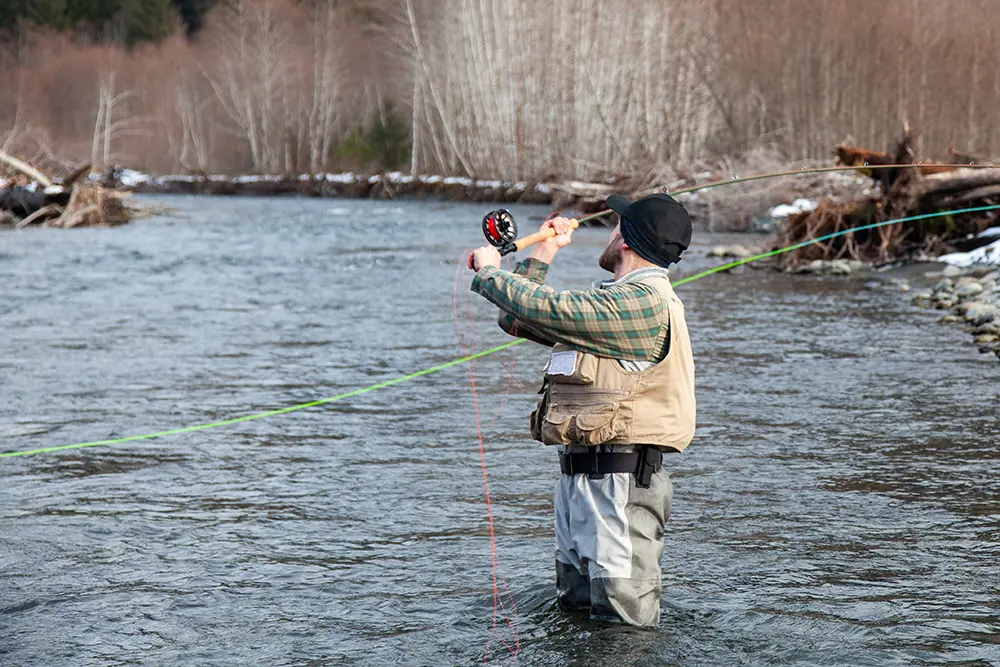
Casting Techniques and Presentation in Steelhead Fly Fishing
Let’s tackle one of the most essential skills in steelhead fly fishing – casting. But not just any cast, we’re talking about Spey casting. This is a classic technique that can cover large water expanses effectively.
Mastering Spey Casting Techniques for Steelhead Fly Fishing
The secret to effective spey casting lies within mastering your timing and rhythm. It’s more like performing a dance with the river than merely flinging a line out there. The best part? You don’t need back cast room because all action happens directly in front of you, making it perfect for those tight spots along river banks.
In addition to its practicality, Spey casting has an element of spectacle—think whirling dervishes or ice skaters pulling off flawless pirouettes—but here’s where we reel it back into reality: this ain’t ballet folks. In fact, achieving mastery over these techniques might feel akin to taming wild horses rather than dancing swans.
TIP: If you’re new to this game or want some pointers on how to improve your style, consider booking lessons at your local fly shop.
Proper Presentation of Flies to Steelhead
Moving onto presentation strategies – let me tell ya’, when targeting steelheads, every detail matters from selecting suitable flies (such as egg patterns or streamers) down to their precise delivery.
Presentation starts with understanding where fish are likely holding in the water column and using your fly to target these zones. If you’re not getting bites, consider adjusting your approach—try dead drifting or swinging flies through different sections of the river.
And remember folks, steelheads are notorious for their mood swings. What worked yesterday may draw a blank today so be prepared to switch tactics if necessary.
Locating and Targeting Steelheads in Various Waters
The art of steelhead fly fishing requires an understanding of their environment. It’s like a treasure hunt, where the rivers are your map and the steelheads, well they’re the hidden gems.
Understanding Steelhead Rivers and Their Characteristics
To locate these elusive creatures, you need to read the river systems as if it were your favorite adventure novel. You’ll find that different parts of a river can hold these fish at various times during their journey upstream for spawning or when heading back downstream to large water bodies.
Steelheads often use current breaks created by structures such as rocks or logs which offer rest spots from strong currents. Just like us humans needing a break after hiking up long runs on our summer months’ adventures. The areas behind these structures create what we call eddies; slow moving whirls that provide perfect holding spots for resting fish. Wild Steelheaders United has some fantastic resources on this topic.

Warm and dry in a hydrophobic hoodie while stalking Steelhead. Click Here to see the whole line.
Locating and Targeting Steelheads in Various Waters
The art of steelhead fly fishing requires an understanding of their environment. It’s like a treasure hunt, where the rivers are your map and the steelheads, well they’re the hidden gems.
Understanding Steelhead Rivers and Their Characteristics
To locate these elusive creatures, you need to read the river systems as if it were your favorite adventure novel. You’ll find that different parts of a river can hold these fish at various times during their journey upstream for spawning or when heading back downstream to large water bodies.
Steelheads often use current breaks created by structures such as rocks or logs which offer rest spots from strong currents. Just like us humans needing a break after hiking up long runs on our summer months’ adventures. The areas behind these structures create what we call eddies; slow moving whirls that provide perfect holding spots for resting fish. Wild Steelheaders United has some fantastic resources on this topic.
Reading Water and Identifying Steelhead Holding Spots
Riffles are another prime location to look out for while targeting fish. They’re characterized by choppy surface tension due to shallow depth and fast flow—kinda like mini white-water rapids. These zones contain high levels of oxygen making them ideal feeding grounds. So naturally, it’s an excellent spot to cast your egg sucking leech.
Pools also play host but under different circumstances: usually in winter conditions when slower water is preferred by cold-weather-adverse steelhead. And don’t forget about seams—the lines separating fast-flowing main channels from slower-moving side waters—it’s here where food items tend to congregate, making it a popular dining spot for steelhead.
And yes, you’re right. All these features sound like they could belong in an action-packed fantasy novel. But let’s get back to the real world and continue our fish tale…
Fly Swing Technique: Your Secret Weapon
Just like knowing where steelhead hang out, mastering the fly swing technique is key to catching steelhead successfully.
Playing and Landing a Steelhead
There’s a sweet science to hooking, playing, and landing steelhead. It’s not just about strength but finesse, timing, and the right technique.
Techniques for Hooking Steelhead
You’ve got your fly swing dialed in perfectly. The egg sucking leech pattern is making its way through the water column like an irresistible snack on a string. Suddenly you feel it – that unmistakable tug of a steelhead taking interest in your offering.
A thrill runs through you as excitement builds. This is where some crucial decisions can make or break this potential catch-of-a-lifetime moment.
The most important thing here? Don’t yank. Instead of setting the hook with brute force (as tempting as it may be), use what we seasoned anglers call “the slow lift”. Simply raise your rod tip smoothly while maintaining tension on the line; trust me – if there’s weight at the end of it then congratulations are due – you’ve hooked into one feisty Oncorhynchus mykiss.
Playing Steelhead: A Test of Patience & Skill
The key word when fighting these fish? Relaxation. That doesn’t mean kick back with popcorn though – no sir.
This part requires strategic reeling and proper handling so that both angler and fish come out unscathed. Steelheads have impressive endurance matched only by their unpredictable nature; they’ll dart off unexpectedly after periods of calm swimming around or vice versa.
You must remain focused throughout this dance because even minor mistakes can result in losing these silver bullets from big water.
Your main objective during this stage is to tire the fish without tiring yourself out. Remember, you’re not trying to win a tug of war but rather convince your opponent that it’s better off in your net than making a mad dash for freedom.
Strategies for Landing Steelhead
Great job up to this point. You’ve lured and maneuvered this crafty being with the skill of a seasoned pro. Now, it’s time for the grand finale.
FAQs in Relation to How to Start Fly Fishing for Steelhead
What do I need to fly fish for steelhead?
You’ll need a 10-foot 8-weight rod, quality floating line, and a stout large arbor reel. Also pack various flies such as egg patterns, nymphs, and streamers.
How do you fish for steelhead with a fly rod?
Fly fishing techniques like swinging flies or nymphing work well. Use spey casting methods and present your flies effectively in potential holding spots.
How do you start steelhead fishing?
To kick off, learn about the behavior of steelheads. Then get the right gear and master specific fishing techniques while choosing appropriate flies based on conditions.
What size fly rod do you need for steelhead?
A 10-foot 8-weight fly rod is ideal when targeting these elusive fishes. A 9-foot 7-weight will get the job done as well. I personally prefer 12-foot to 16-foot fly rods for steelhead and even trout in the right circumstances.
Conclusion Fly Fishing for Steelhead
Starting your journey into fly fishing for steelhead is an art form. It requires a deep understanding of the fish, their behavior and migratory patterns. As you learn fly fishing for Steelhead.
You learned that gear choice matters; from selecting the right rod to ensuring you have essential safety equipment. And don’t forget about choosing flies wisely based on conditions!
Mastering techniques such as swinging flies or nymphing can give you an edge, while knowing how to read water helps in locating these elusive creatures.
So go out there! Take what you’ve learned here today on how to start fly fishing for steelhead and put it into practice. After all, nothing beats hands-on experience when mastering this beautiful dance with nature.

